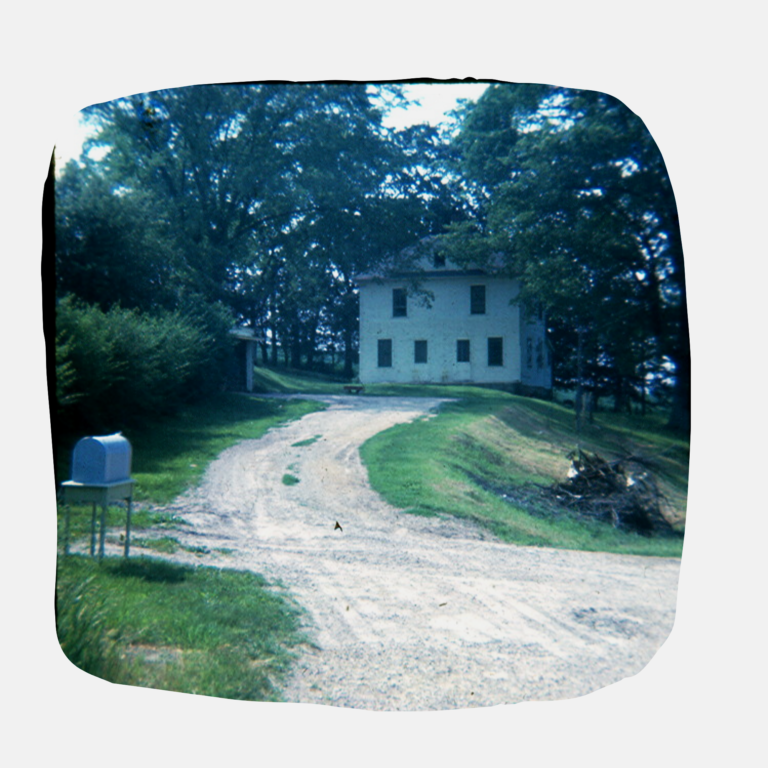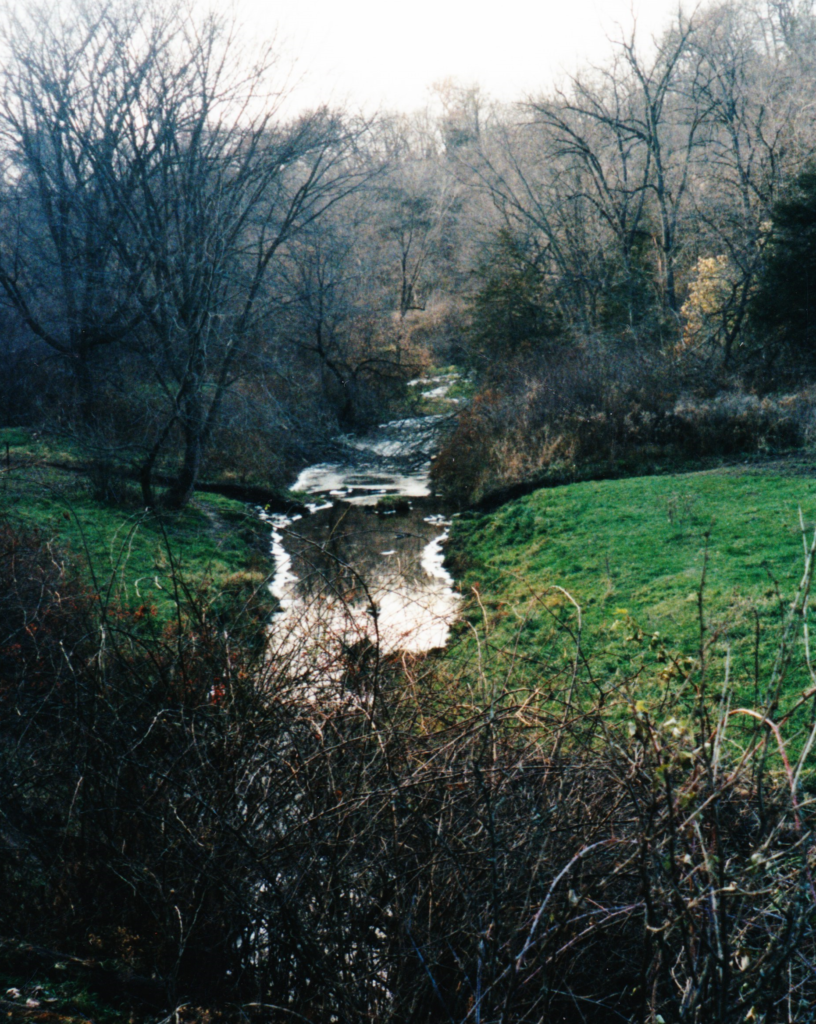Gardens, like people, come in all shapes and sizes and possess unique characteristics. Every season brings change and as Ecclesiastes 3: 1-8 states: There is a time for everything, and a season for every activity under the heavens

Shortly after moving to our 80-acre farm, my mother had a vision of creating a multi-tier flower garden to prevent erosion on the hillside leading up to the house. However, with limited money and small children to care for, she had to get creative. That’s when she hit upon the perfect solution – using rocks! The only challenge was acquiring enough rocks to build the garden.

Fortunately, our farm encompassed 40 acres of land, which included the Driftless Area, a region characterized by hills and woodland, offering the endless supply of rocks.

http://eaglebluffmn.org/resources/driftless/The Driftless Area is a unique region in the Upper Midwest known as the forest-savanna transition. This area was never covered by ice, during the last ice age therefore the area lacks the characteristic glacial deposits known as drift, hence the name “Driftless Area”.
The geography is characterized by its steep, rugged landscape and the largest concentration of cold water streams in the world. The entire area of 15,000 square miles is surrounded by drift, but the glaciers didn’t cover it, making it a mystery. The Driftless area is located in upper northeast Iowa, parts of Wisconsin, Illinois, and Minnesota.
Blessed with the opportunity to experience this special landscape, located within the boundaries of the farmstead, we enjoyed our turn living within this special landscape. Because of the unique geographic challenges posed by the Driftless Area, many who live here have fostered a closer relationship to the land. Mom displayed a deep desire to connect to the land, a desire that she instilled in me and has inspired me to continue the connection thru farming and owning animals.

Effigy mounds
The 200 plus American Indian mounds are located in one of the most picturesque sections of the Upper Mississippi River Valley.
Located near Harpers Ferry Iowa it is managed by the National Park Service.

https://www.nps.gov/efmo/index.htm Nearly a millennium ago, societies started to leave their spiritual marks on the land, resulting in tens of thousands of mounds of various shapes, including lines and circles, and even animals like bears and thunderbirds. Effigy Mounds National Monument, located along the Mississippi in northeast Iowa, is an excellent destination to view these historical landmarks. The Driftless area was not immune to the genocide and dispossession of Native Peoples upon white settlement; the Sioux, Ioway, Ho-Chunk, Sauk, and other indigenous groups were either removed or killed during the 18th and 19th centuries.

Unlike the surrounding flat terrain, the hilly slopes of the Driftless were ill-suited to conventional agriculture.
Fields often suffered from severe erosion of topsoil and runoff from plowed or overgrazed land. During the 1930s, the Driftless region saw the incorporation of conservation and industrial production processes in agriculture. This approach seeks to find a balance between maximizing agricultural output and preserving natural resources such as soil, water, and wildlife habitats. Farmers can reduce their environmental impact while still maintaining productivity. This approach recognizes that protecting the environment and ensuring food security are not mutually exclusive goals, but rather, are interconnected and must be addressed together.
In order to maintain the best practices and preserve the woodland area on our farm, my father fenced off the steep upper slopes and utilized the woodlands to as grazing areas for the cattle. This helped keep the grass short and made it easier to access the creek and woodland area.
Apart from providing these benefits, the cattle walking single file through safe areas between the barnyard and stream, create compact dirt trails, perfect for a peaceful woodland stroll.


Building the rock garden was no easy feat. It required multiple trips to the woods to collect and transport the rocks back home. My dad built a small wagon that could easily be hitched to his trusty Ford tractor to make the process feasible. I recall watching him connect the wagon to the tractor, knowing that our exciting journey was about to commence!


Rainwater runoff from the pasture into the woods often created deep ravines, which caused significant soil erosion. As a solution, a bulldozer was utilized to create a rough dirt road which enabled us to reach the open area located along the banks of the Hickory Creek area.
Hickory Creek is a beautiful and fascinating body of water that changes with the seasons. It varies in width and narrows in certain areas, with the water surging in spring and pressing against the bluff, causing the creek to bend. The water rushes and spills over rocks as it reaches the tight corner.
This cold, clear creek is spring-fed and flows with vigor in the spring, meanders in the summer, and dries to a trickle in the fall. Hickory Creek, which originates from a natural spring located at the Tri-City Golf Club short distance outside Luana IA, winds its way toward the Yellow River Watershed Basin area. Hickory Creek is one of nine tributaries that make up the Yellow River’s four segments. During the dry season, the creek bed is littered with an easy-to-access plethora of rocks
As a child, I have cherished memories of wading in the creek while our dog, Skippy, enjoyed the swimming hole. Hickory Creek, one of the tributaries of the Yellow River, was an essential part of the local ecology, providing a habitat for various aquatic organisms such as fish, crayfish, and freshwater mussels. It was also a vital source of water for the surrounding vegetation and wildlife including our farm animals.

The sound of water trickling over the rocks in the creek and the surrounding woods, offered sweet fragrances and provided an overall sensory experience of joy and tranquility.
Walking along the creek bed, it was easy to find interesting rocks and stones of various shapes and sizes. We would collect them and bring them back home to add to our growing collection. The rocks were a testament to the natural beauty of the area and a reminder of the peaceful moments we spent there. It was a place where we could escape the chaos of daily life and immerse ourselves in nature’s beauty. The woods surrounding the creek were dense, and the trees provided a natural canopy that filtered the sunlight, creating a serene environment.



One particular memory that stands out is my mother making pancakes over an open fire with a flat round gridiron just for fun.
Despite being just five years old at the time, this memory remains close to my heart.
Upon reflection, I realized that the old saying, “leave no stone unturned,” is applicable to memories too.
Our gardening project not only provided a scenic view and physical exercise, but it also offered sweet fragrances, seeds to share, and an overall sensory experience.
The Impact of My Mother's Teachings on My Life
Reflecting on my life, I know these moments shared with my mother have played a pivotal role in shaping me into the person I am today. Her lessons have had a profound effect on my present and future. The two most cherished teachings that she has imparted on me are: the value of hard work and the importance of kindness and hospitality towards others. As I carry her wisdom with me, I’m reminded of life’s simple pleasures and the importance of passing on these lessons to future generations. For me, there is no greater reward than knowing her teachings have and will continue to inspire others…..
…and that’s enough!

Skippy and the flower garden
The childhood pictures shared in this post are authentically mine. If you’re interested, I have included links to Effigy Mounds and the Driftless area for additional research. In the spirit of sharing, please take a moment to reflect on a special memory you have with or because of your mother and leave it in the comments below. Thank you.